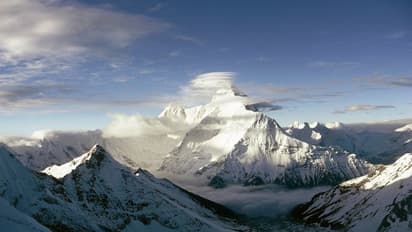
New Delhi: A team of meteorologists has warned of severe depletion in the glacial area of the Himalayas, especially over the Hindu Kush side, after there has been a rise of temperature at a rate of 1.5 degrees Celsius — a rate higher than the average global warming rate.
The team was participating in the five-day ‘Science and Training workshop: Climate Change over the High Mountains of Asia’, which was organised at Indian Institute of Tropical Meteorology (IITM) on Monday.
“While there are no significant rainfall variations observed over Western Himalayas, the temperatures have been rising over this region during the recent years,” said Hemant Borgaonkar, an expert in Dendroclimatic studies, reported The Indian Express.
1. Any alteration in the glaciers and snow cover of over the Himalayan ranges will have a severe effect on irrigation, drinking water and other needs of people, especially those living in the mountain and the foothill.
2. “Higher altitude range along the Western Himalayas is found to be warming at a faster rate than plains closeby,’ said R Krishnan, senior IITM scientist, reported the website.
3. According to the experts, the Himalayas are the third pole, after Antarctic and Arctic poles, that is extremely crucial for regulating climate, especially the Southwest monsoon, over Asia.
4. “During 1960-2013, the glacial area loss has been 13 per cent of the total area and this glacial retreat is creating more lakes in the downstream areas,” said M Ravichandran, director, National Centre for Antarctic and Ocean Research (NCAOR), Goa, reported the website.
5. According to sciencemag [dot] org, if Himalayan glaciers continue to melt, it can trigger disastrous floods in the valleys.
6. According to Joseph Shea, a glacier hydrologist at the University of Saskatchewan in Saskatoon, Canada, as meltwater lakes swell, the risk of a breach heightens and bigger lakes pose the risk of catastrophic dam failure.
7. Arun Shrestha from the International Centre for Integrated Mountain Development (ICIMD), Nepal also said that the glacial melt is most crucial for irrigation purposes over the Indus river basin. Unlike Bramhaputra or Ganga river basins, which depends on the southwest monsoon, the Indus river basin is completely dependent on these glaciers.